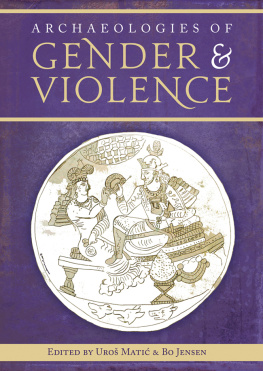Holding Your Square
Crime Ethnography Series
Series editors: Dick Hobbs and Geoffrey Pearson
Published titles
Holding Your Square: streetlife, masculinities and violence , by
Christopher W. Mullins
Narratives of Neglect: community, exclusion and the local governance of
security , by Jacqui Kann
Holding Your Square
Masculinities, streetlife and violence
Christopher W. Mullins
First published by Willan Publishing 2006
This edition published by Routledge 2013
2 Park Square, Milton Park, Abingdon, Oxon OX14 4RN
711 Third Avenue, New York, NY 10017 (8th Floor)
Routledge is an imprint of the Taylor & Francis Group, an informa business
Christopher W. Mullins 2006
The rights of Christopher W. Mullins to be identified as the author of this book have been asserted by him in accordance with the Copyright, Designs and Patents Act of 1988.
All rights reserved; no part of this publication may be reproduced, stored in a retrieval system, or transmitted in any form or by any means, electronic, mechanical, photocopying, recording or otherwise without the prior written permission of the Publishers or a licence permitting copying in the UK issued by the Copyright Licensing Agency Ltd, 90 Tottenham Court Road, London W1P 9HE.
Hardback
ISBN-13: 978-1-84392-194-3
ISBN-10: 1-84392-194-4
British Library Cataloguing-in-Publication Data
A catalogue record for this book is available from the British Library
Typeset by GCS, Leighton Buzzard, Beds
Project management by Deer Park Productions, Tavistock, Devon
For Jerry A. Mullins (19481992) and Jerry C. Mullins (b. 1999) who have taught me the only things I really needed to know about masculinity.
Contents
Many people helped to make this project possible. I would like to specifically thank Richard Wright, Bruce Jacobs and Richard Rosenfeld for giving me access to their data for this project. Jody Miller, Scott Decker and Norman White also gave me access to their data sets, even though those data were eventually removed from the combined sample. Jody Miller deserves special thanks and commendation. During my tenure at UMSL, and especially during the process of completing the doctoral dissertation that served as the core of this volume, she was invaluable in giving freely of her time: to read my work, to chat, to encourage or anything else needed. Additionally, I owe a special debt of gratitude to Richard Wright, who has taken a strong interest in my career since we first met. Richard has gone out of his way to mentor and guide me and for that I am always grateful.
I would have got nowhere without the support of my family. My wonderful children, Jerry and Arwen, always greeted me with joy and love no matter how often I was gone, ignored them or was just generally stressed and grumpy. My love for them and their very presence motivated me more than they will ever know. Lastly, and most importantly, I must acknowledge the unwavering love and support of my wife, Robin. Her sacrifices have been without measure and I am always grateful for her truly being the better half of my life and my spirit. Without her, my self and everything I do would be truly lesser.
Christopher Mullins Holding Your Square is a pathbreaking investigation. At its most basic level, it provides an important advance in criminological understandings of street violence. Feminist scholars have long argued that it is only with explicit attention to gender that crime can be fully understood and theorized. Yet in American criminology, gender too often is taken to mean women. Men, too, have experience, and are shaped by gender. Though criminologists deal disproportionately with the behaviors of men, this social fact is often taken for granted rather than theorized. Moreover, gender is routinely treated as nothing more than an individual-level attribute. In contrast, Mullins provides a rigorous, complex analysis of the structural and situational gendered underpinnings of mens violence. Holding Your Square provides compelling evidence that gender matters in the production and reproduction of street violence.
Mullins is by no means the first to argue that there are important linkages between masculinities and crime. He builds from the insights of scholars such as R. W. Connell, Michael Kimmel and James Messerschmidt, and rightly notes that early and contemporary subcultural theorists often speak about facets of masculinity construction without identifying these features as such. He also draws from the large body of feminist criminological theorizing that has examined the experiences of women in male-dominated criminal settings. Mullins demonstrates that important feminist insights can be gained by also investigating how men within such hierarchies obtain and maintain their empowered positions (page 8).
Beyond these basic contributions, I draw the readers attention to two especially notable facets of Holding Your Square: its unique methodological contribution, and the significant theoretical advances this work brings to the study of masculinities and crime. Mullins methodological approach is distinct in several ways. His is one of the few criminological studies to utilize secondary qualitative data. This poses certain challenges, as Mullins discusses, but also comes with tremendous benefit. Primary data collection of any type, and perhaps especially for qualitative research, is a costly and time-consuming endeavor. Yet once the initial study is completed, there are rarely mechanisms in place to archive qualitative data for further and new analyses. Holding Your Square demonstrates the added scholarly value that can result. As qualitative research receives renewed appreciation within US criminology, my sincere hope is that we work together to develop a stronger collaborative network of scholars and create infrastructural supports for archiving and sharing qualitative datasets.
Mullins study is not only based on secondary data, but specifically a merged dataset created by combining data from multiple investigations. Though each sample was drawn for different investigatory purposes (to study the enactment of drug robberies, retaliation, snitching, and carjacking), each dataset includes similarly criminally embedded individuals from the same community setting. Rather than a liability, the merged data are a distinct strength of Mullins investigation: that he finds such strikingly common threads across studies is a testament to the powerful perceptual and situational influence of masculinities in offender street networks.
One additional methodological feature of Holding Your Square is noteworthy. A particular strength of qualitative analysis is its ability to illuminate the micro-level perceptual and interactional processes associated with crime, and to use these insights to develop and elaborate social theory. However, there remains a palpable divide within US criminology between positivist epistemologies (dominated by quantitative theory testing) and the interpretive epistemologies and inductive methods typically employed by qualitative scholars. Scholars in the former tradition are often skeptical of qualitative research. On the other hand, we have not necessarily advanced our cause to this audience, because our analysis procedures are rarely made sufficiently transparent to readers.











